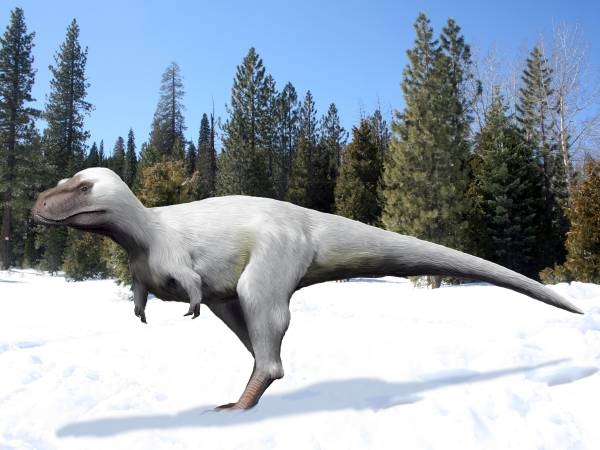
The remains of a carnivorous, tyrannosaurid dinosaur were found in Alaska — named Nanuqsaurus, or “polar bear lizard”, after the cold, snowy upper latitudes of its natural habitat.
The single species Nanuqsaurus hoglundi is known from a partial skull fragment from the Prince Creek Formation of the North Slope of Alaska, dating back to the Late Cretaceous period. Although related to Tyrannosaurus rex, the polar bear lizard was only half its size, estimated to have stood at about twenty feet in length.
Its small size was due to food scarcity that persisted throughout winters in these upper latitudes. According to paleontologists, around 70 million years ago Alaska belonged to an ancient subcontinent known as Laramidia, and experienced characteristic cold temperatures and long periods of light and darkness.
In the cold, dark winters, prey numbers sharply declined, leaving carnivores little to feed on.

Analysis of the skull fragment revealed an enlarged brain area dedicated to smell, confirming Nanuqsaurus likely fed on live prey similar to Tyrannosaurus rex rather than carcasses. A smooth nasal contact revealed the skull belonged to a full-grown, adult dinosaur.
Nanuqsaurus possessed a distinguished ridge on its head which highlights its relation to Tyrannosaurus rex. The reconstructed skull was determined to measure about 60-70cm in length. The species was first identified by Anthony R. Fiorillo and Ronald S. Tykoski in 2014 who named the dinosaur Nanuqsaurus hoglundi, derived from a combination of the Iñupiaq word for “polar bear”, nanuq, and the Greek word sauros, for “lizard”.




